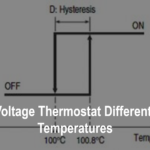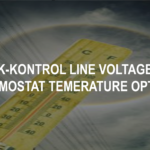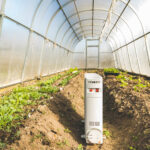The K-Kontrol line voltage thermostat is a versatile device designed for precise control over heating, cooling, and ventilation equipment. To ensure optimal performance, it is important to follow the correct operating instructions. This guide will take you through essential steps to maximize the efficiency of your K-Kontrol line voltage thermostat.
To purchase a line voltage thermostat, click here!
Proper Installation
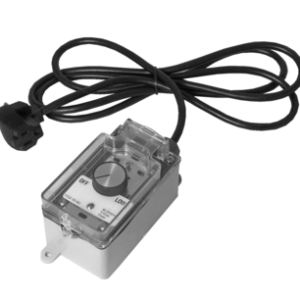
The foundation of proper thermostat operation lies in its installation.
Ideal Placement:
Position the thermostat 5-6 feet above the floor for accurate temperature readings. Consider the following examples for specific applications:
- Greenhouse: Mount at plant height, avoiding direct sunlight.
- HVAC: Place away from heat sources.
- Agriculture: Avoid direct sunlight and heating elements.
- Deicer: Mount on the top side of the dock for proper air temperature reading.
Avoid Extreme Conditions: To prevent inaccurate readings, avoid mounting the unit in areas exposed to direct sunlight or near equipment generating unusual heat or cold.
- Proper location is crucial for accurate temperature readings, allowing your thermostat to function properly.
Wiring
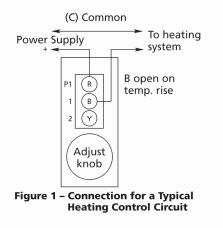
Most line voltage thermostats are wired for heating unless specified otherwise. Follow these steps for proper wiring:
- Remove the thermostat cover.
- Connect wires to the appropriate terminals (heating or cooling).
- Place the cover back on the thermostat.
- Connect the power supply.
- Tighten screws on the thermostat cover.
- Turn the dial to set the desired temperature.
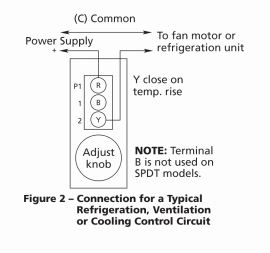
Checking Wiring:
- Turn the dial to 110°F (heating mode) – device should come on; (cooling mode) – device should be off.
- Turn the dial to 30°F (heating mode) – device should cut off; (cooling mode) – device should come on.
 Switching Between Heating & Cooling:
Switching Between Heating & Cooling:
- Disconnect the power supply.
- Remove the cover.
- Switching to cooling mode: Move the wire from the heating terminal to the cooling terminal. Switching to heating mode: Move the wire from the cooling terminal to the heating terminal.
Configuring Your K-Kontrol Thermostat
Dial Adjustment: Set the thermostat dial to the desired temperature (e.g., 75°F for a fan to turn on at 75°F).
Functional Testing: Validate functionality by setting the dial to a lower value than the current room temperature and confirming that connected equipment activates as expected.
Troubleshooting: If issues arise, here are some things to check:
- Verify Power Supply: Before troubleshooting, ensure that the thermostat has a stable power supply. Check the circuit breaker or fuse box to ensure power is reaching the thermostat. If the thermostat does not display any power or is unresponsive, it may indicate a power supply issue that needs to be addressed.
- Check Thermostat Settings: Make sure the thermostat settings are appropriate for your comfort requirements. Ensure the mode (heating or cooling) is selected correctly, and the desired temperature is set within the desired range. If the temperature is set too high or too low, it may affect the performance of the HVAC system.
- Calibrate the Thermostat: If you suspect inaccurate temperature readings, you can calibrate the thermostat to improve accuracy. Refer to the K-Kontrol’s thermostat manual or documentation for instructions on how to calibrate the temperature settings. Follow the provided steps carefully to ensure precise calibration. Refer to the instruction manual here.
- Test the Temperature Accuracy: To test the temperature accuracy of the thermostat, you can use an accurate thermometer as a reference. Place the thermometer next to the thermostat and wait for several minutes to allow the readings to stabilize. Compare the temperature displayed on the thermostat with the reading on the thermometer. If there is a significant difference, it may indicate a calibration issue or a malfunctioning thermostat.
- Inspect Sensor Placement: Ensure that the thermostat’s temperature sensor is correctly positioned. The sensor should not be obstructed by objects that could affect temperature readings, such as curtains or furniture. Additionally, make sure the sensor is clean and free from dust or debris, as this can impact its accuracy.
- Check for Wiring Issues: Inspect the thermostat wiring for any loose connections or damaged wires. Ensure that all connections are secure and properly seated. If you find any damaged wires, it may be necessary to replace them or seek professional assistance.
- Professional Assistance: If troubleshooting steps do not resolve the issue or if you are unsure about performing the troubleshooting yourself, it is recommended to seek professional assistance. HVAC technicians have the expertise and tools to diagnose and fix complex thermostat issues accurately.
By adhering to this guide, you can unlock the full potential of your K-Kontrol line voltage thermostat, ensuring efficient control of your HVAC equipment and maintaining optimal indoor comfort. For comprehensive details, consult the instruction sheet provided with your K-Kontrol thermostat, or check the link here.
